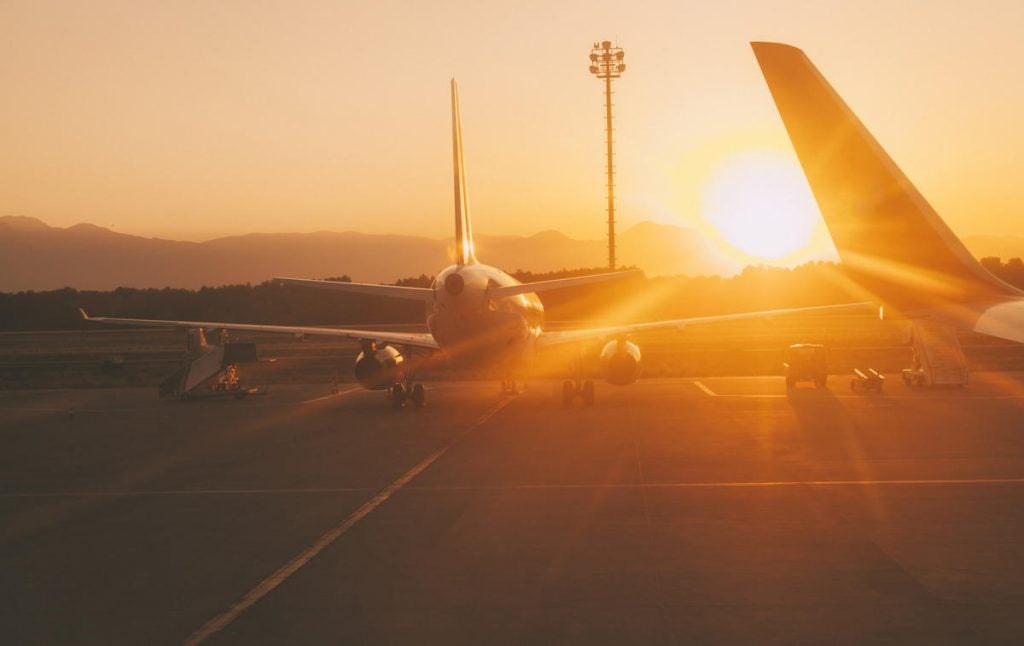New social science research finds people are willing to put a price on carbon; just don’t ask them to pay taxes
This post was authored by Rainer Romero-Canyas, Lead Senior Social Scientist for EDF.
Flying shame has gone mainstream—just ask the Duke and Duchess of Sussex. But are travelers who won’t face the wrath of the tabloids for flying willing to chip in to offset the cost of flying on the environment? A new study from the University of British Columbia and EDF suggests they are. It all depends on how it’s labeled and who is viewed as paying for the environmental impact of the flight.
We wanted to see if it was possible to introduce policy instruments designed to price carbon, without triggering an aversion to taxes, a common challenge in the United States. So, we tested two aspects of the fee: one, both how it was labeled (a carbon offset or a carbon tax), and two, if it was important to see who got the bill (the company that imports or processes fossil fuel or the consumers who use their products and services).
In an upcoming issue of the Journal of Environmental Psychology, my co-authors and I detail the results of three studies focused primarily on the airline industry, because its emissions are slated to triple in the coming decades, absent policy change, making it one of the fastest sources of carbon pollution worldwide. The good news: consumers are willing to pay more for flying responsibly, just as long as it’s the airlines they’re flying that are stepping up and shouldering that responsibility.
Setting the conditions for choice
In one of the studies, we gave 588 American study participants short descriptions of policies under consideration by airlines and assigned them randomly to one of six conditions. The descriptions included carbon pricing policies that were either upstream (producers or importers pay) or downstream (consumers pay), and were labeled as an offset or tax. These conditions gave us four combinations and groups.
We then asked participants to imagine they were planning a vacation to an island and showed them five pairs of similarly priced flights, asking them to indicate their preferred flight in each pair. One of the flights in each of the pairs included an additional $14 line item described as the additional cost related to the policy description they had just read. The flight with the additional fee was either slightly more expensive (by less than $10) or cost the same as the flight without the fee.
For the control groups we randomly assigned some participants to one of two conditions that did not include policy descriptions. Half of them saw the pairs of flights that included a choice with the additional fee but did not read an explanation. The other control group saw the pairs of flights that included a choice with the additional fee not applied at all. This design allowed us to tease out the effects of the policy features from preferences for lower cost flights and learn if having an explanation for the additional cost mattered.
Consumers will pay carbon prices, depending on where and how they’re levied
As long as they have information about the offset, consumers are willing to pay more for their airline tickets. They preferred upstream offsets the most but were also willing to pay downstream taxes. Among our findings:
- Participants chose the fee-carrying flight about 72% of the time, when the carbon price was leveled at the airline and labeled an offset for fossil fuel production and importation. And while upstream offsets were most preferred, participants chose other fee-carrying flights between 54% and 62% of the time.
- Just as important, participants in the upstream offset condition were more likely than participants in the no-information condition to select the fee-carrying flights. In other words, knowing why a flight option cost more drove people to choose the more expensive option in the pair.
- Participants in the no-fee control condition chose the flights that normally would carry the fee 76% of the time, suggesting that participants would prefer the cheaper flights in the pair in the absence of information. But once consumers understand that a flight costs more because its price includes an offset, people will choose that flight and pay their part of the offset.
- Participants in a final experiment told us they preferred offsets to taxes, because the offset was seen as having greater positive impact on the environment relative to taxes. They also felt that leveling the fee upstream placed accountability for the fee on those responsible for the emissions.
The articles in our upcoming paper are just three in a series of studies. Together, they show that consumers want their airlines to take responsibility for flight emissions—and they’re willing to pay more for tickets, if they can be assured that the money will go toward reducing emissions. As airlines prepare to implement the Carbon Offsetting and Reduction Scheme for International Aviation (CORSIA), they should embrace it with integrity—and approach it with ambition, as study participants indicated they will pay for it. However, at least in the United States, the term “tax” should be approached with caution—and perhaps not only in the aviation sector.
Flying-shame may prompt consumers to choose less-emitting transport where alternatives like rail or sail are realistically available. But where such options aren’t practicable, our study shows that climate benefits can be gained if airlines focus their energies on implementing high-integrity programs to reduce and offset emissions, making the practice both widespread and palatable to the flying public. The key is the extent to which consumers understand that their airlines are actually using carbon pricing to achieve real environmental benefits.











2 Comments
so help full. tnx
thats a good and helpful post.
tnx